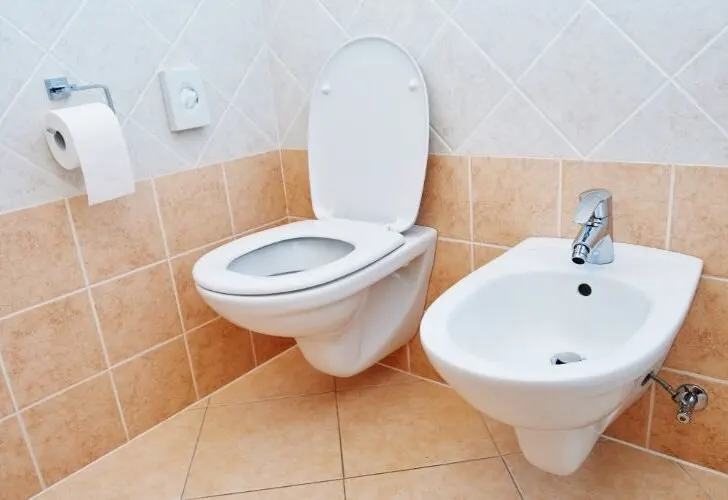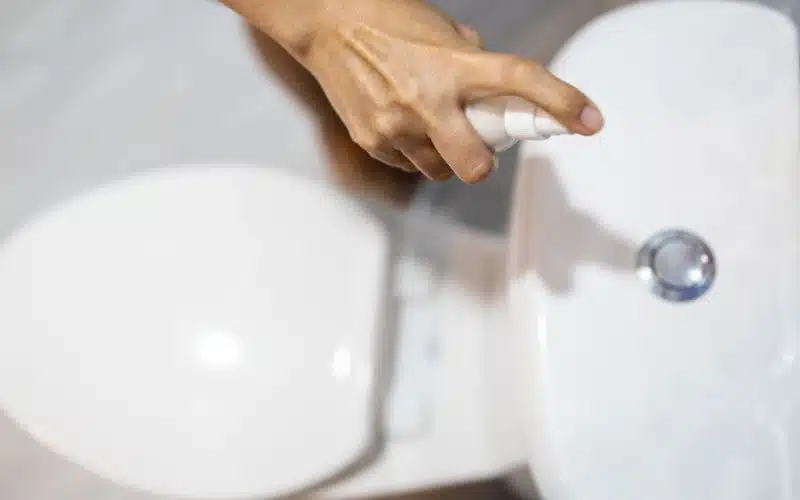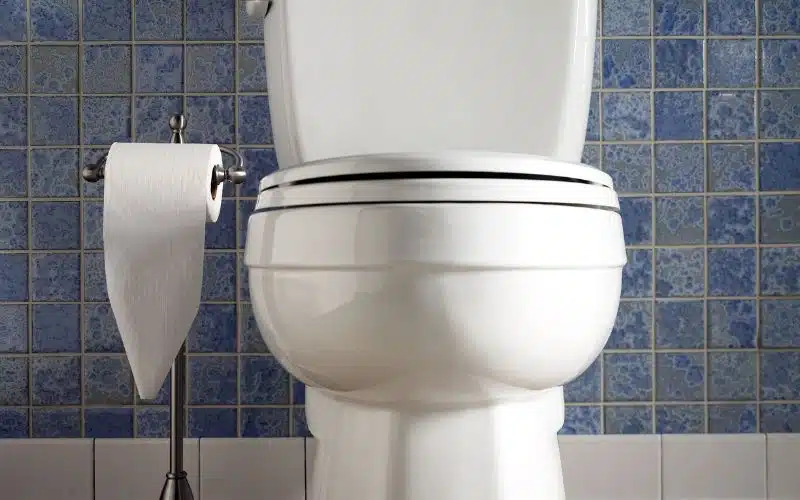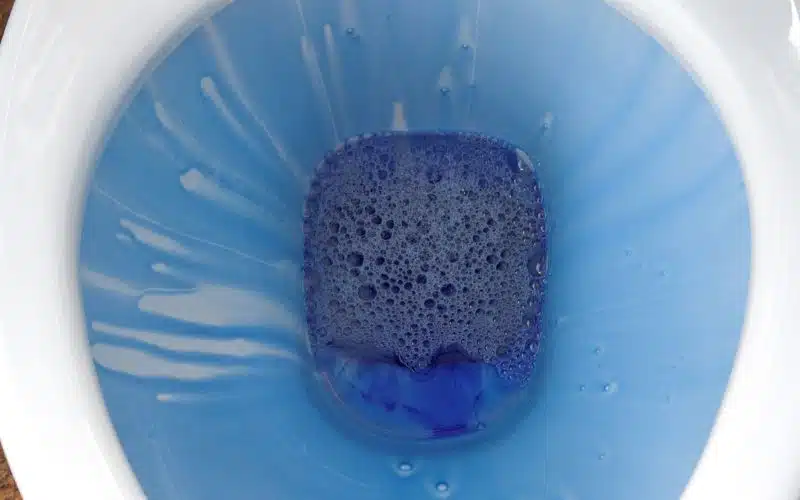Padded toilet seats are high in demand due to their exceptional features that benefit many homeowners.
These comfy and soft toilet seats offer a more pleasant experience than normal plastic ones. Despite its benefits, many homeowners often wonder if padded toilet seats are sanitary or unsanitary.
Padded toilet seats are sanitary and good for use. However, they become unsanitary when small cracks develop in the seat’s cover. This generates a perfect breeding area for bacteria and algae.
Are Padded Toilet Seats Hygienic?

Padded toilet seats are hygienic but become unhygienic with regular usage over a long time.
This happens when small cracks develop in the cover of the toilet seat. When you fail to repair these cracks, they trap human body fluids like urine and sweat.
The cracks then serve as breeding habitats for bacteria, germs, and little insects. A padded toilet seat can only harbor about fifty kinds of bacteria.
These bacteria are mostly the ones that only cause bodily harm. They penetrate your system when you have open flesh wounds or direct contact with your private organs on a contaminated surface.
The bacteria, in most cases, can not survive on the padded toilet seats long enough to cause the spread of any contamination or infection. Even if it does, it will not be sufficient to cause bodily harm or sickness.
Why Do People Buy Padded Seats?
Most people prefer to use padded toilet seats due to their high comfortability. Padded toilet seats provide a soft, cushioned, comfortable sitting area.
Thereby providing additional comfort over the usual non-padded toilet seats. The padded toilet seats are very helpful to aged people, especially those with disabilities and limb mobility issues.
Padded toilet seats usually come in a variety of designs. Some with elevated seats and armrests.
These features, alongside its additional weight support, have proven useful to many individuals.
Older people are likely to fall in bathrooms, but features like the elevated seats and armrests, reduce the chances of this occurrence.
Padded toilet seats also provide warmth. This eliminates the problem of cold toilet seats in the winter season.
Non-padded toilet seats are usually very cold, especially in the year’s cold months. The cushion on the padded toilet seats helps solve this problem or reduce its effects.
They are also very easy to install, set up, and maintain as they fit over toilets easily in the same way standard toilet seats do.
They require no extra steps or setup process. Cleaning the padded toilet seats is easy, as most have detachable paddings and cushions.
When the seats need some cleaning, the cushions can be detached, and the cleaning can be carried out.
How Do I Clean a Padded Toilet Seat?
Cleaning your padded toilet seat is easy if you follow the right procedure. I’ll outline the tools you need to carry out the cleaning properly.
- Water
- Disinfectant
- Soft sponge/Toilet brush
- Citric acid-based products{optional}
- Vinegar{optional}
- Paper towel
Below are the steps to clean your padded toilet seat.
#1. Step 1
Flush the toilet with warm or cold water.
#2. Step 2
Pour a small quantity of disinfectant into the paper towels.
#3. Step 3
Once the paper towels are damp completely, use them to cover the toilet seat.
#4. Step 4
Leave the pieces of toilet paper for 1-2 hours.
#5. Step 5
Remove the pieces of toilet paper and spray the disinfectant.
#6. Step 6
Wash the toilet seat with a toilet brush and rinse with water.
Most disinfectants are usually strong and acidic and may cause skin irritation. Hence, it is not advisable to clean padded toilet seats with bleach as they may also cause skin irritation.
Citric acid-based products are good for cleaning as they act as germ-eliminating forces. They may not be as strong as bleach, but they are not as harmful.
Citric acid-based products do just enough to clean off stains from the toilet seat, which could be the worst you’ll deal with if the padded toilet seats are regularly taken care of.
Soft Vs. Hard Toilet Seat; Which Is Better?
Hard toilet seats are much easier to clean and maintain than soft ones. Regular wiping the hard toilet seat with a sanitized cloth would do a perfect job.
Thereby keeping the toilet clean and more sanitary than the soft toilet seats, hence harboring fewer germs.
They are also less expensive than soft toilet seats. On the other hand, soft toilet seats are cushioned to relieve pressure during use. I
t is more comfortable than the hard toilet seats and may be more aesthetically appealing in a bathroom than hard toilet seats.
Aged people may prefer soft toilet seats because of their additional features, which add to the comfortability factor of the soft toilet seat.
If you are going for aesthetics and comfortability, the soft toilet seat should be your go-to choice. But if you want an easily maintainable toilet seat, the hard toilet seat is your best bet.
Notwithstanding, I’ll highlight the comparison between soft and hard toilet seats in the table below.
What Is the Most Hygienic Material For Toilet Seats?
Plastic is the most hygienic material for toilet seats. Though not the most comfortable, especially in the cold seasons of the year, in terms of hygiene, the plastic toilet seat is more reliable..
Plastic is an anti-allergen, making it difficult to attract dust particles and debris from the environment, helping keep the material clean.
As a non-porous material, this also eliminates the probability of the growth of algae due to moisture.
This would help prevent the toilet seat from serving the purpose of a breeding spot for bacteria and small insects. The plastic toilet seats are made up of a particular type of plastic called acrylic plastic.
Due to acrylic’s chemical and structural composition, surfaces made from this type of plastic can easily be cleaned by wiping the material with a dry or damp cloth.
Nevertheless, if you want your plastic toilet seats free from bacteria, cleaning the surfaces with antibacterial cleaning agents is still advised, as plastics do not encourage bacteria. Still, they do not fight them off either.
Can You Get Infections From a Toilet Seat?
It is possible to get infected from a toilet seat, but it is very unlikely. Many pathogens can only survive for a very short period on the surface of a toilet seat.
For an infection to occur, the pathogens must transfer from the toilet seat to an open wound in the buttocks or thighs.
Even if you come in contact with particular pathogens, you must have contracted them very large amounts, enough to cause sickness.
How Often Should You Clean Your Toilet Seat?
Expert microbiologists have said that the toilet is one of the household’s cleanest things.
According to renowned American microbiologist Charles Gerba, toilet seats are far from the dirtiest things we touch in our houses.
His research found that on the average toilet seat, there are fifty bacteria per square inch of the seat.
Despite all this, cleaning the toilet seat is crucial because it comes into contact with people and their biological and metabolic waste products daily.
This increases the need to clean the toilet frequently. How dirty your toilet seat becomes depends on how often you use the toilet.
However, regular wiping with a dry or damp cloth would keep the toilet seat clean enough to get thoroughly cleaned once or twice every one to two weeks.
Using antibacterial products and air freshening agents would also keep the seat germ free and the toilet smelling good always.
Conclusion
Padded toilet seats are sanitary and safe to use. However, they become unsafe for use when cracks develop on the seat’s cover.
Nevertheless, with proper cleaning and maintenance, you can use your padded toilet seat at your convenience.





